Delhi, a city which has been in existence since time immemorial, a city which has experienced several episodes of plundering and settlements, a city which has been loved and destroyed; has always been my favorite ever since I settled around. The city holds a great cultural and historical significance and that’s what makes me love it. Though several other cities in the country are as beautiful as it is; yet Delhi is close to heart. I am willing to explore other cities too, Calcutta being one of them. While I am sharing with you my visit to Begumpur Mosque, a mosque which is said to have been built around the Tughlaq era, I wonder how a city can hold so much historical and cultural diversity.
Read Here – Chor Minar, Hauz Khas

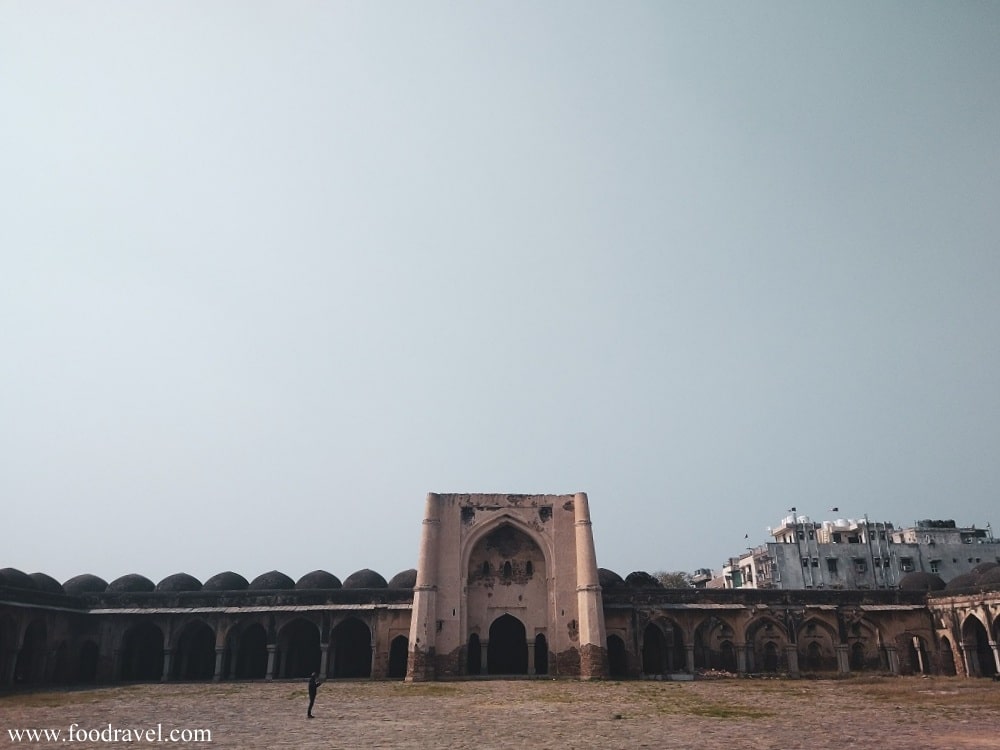
If we look back at the history of Delhi, before the Mughals, we will find it had been ruled over by several dynasties that came here from outside and built monuments which are standing even today, though in ruined forms. Tughlaq dynasty was one of the most famous ones which ruled over the city. The reign was for a short period only which was established in 1320 and by 1413; it was disestablished. The stories are interesting and the monuments are imposing.
Read Here – Humayun’s Tomb

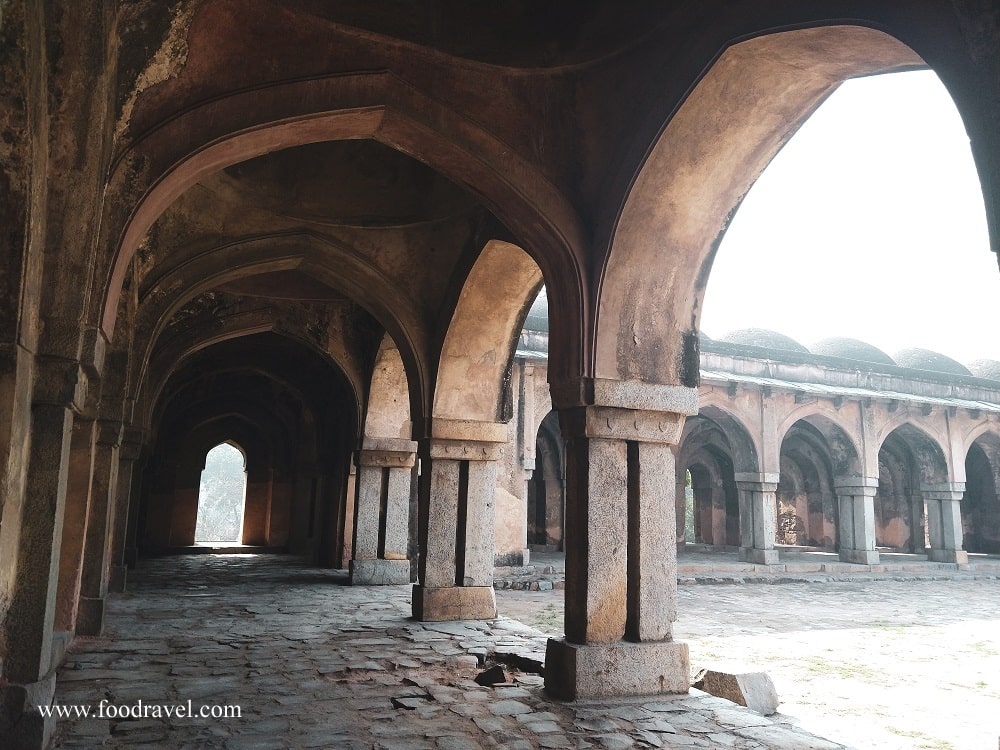

During this period, Tughlaqs built several monuments around the city and Begumpur mosque or Begumpur Masjid was one of the most famous monuments. The mosque which is among the largest mosques of Delhi, today stands in the middle of a locality, waiting for its end. When I visited Begumpur Mosque this year in January, I observed that it wasn’t maintained and no restoration work was carried out or if the mosque underwent some restoration work, that was in the long past. I could see broken walls and broken ceilings. The entire structure was crumbling with grass and other vegetation.
Read Here – Agresen Ki Baoli


The history of Begumpur mosque is yet to be cleared. There are two historical approaches to establish the background and other information. According to one school of thought, Begumpur mosque was built by Khan-i-Jahan Maqbul Tilangani who served as Prime Minister to Feroz Shah Tughlaq. However, another school of thought states that this mosque was built during the times of Muhammad-bin-Tughlaq. Juna Shah, who was the son of Khan-i-Jahan Maqbul, built several mosques; so a majority of historians believe that this mosque was built around then only.
Read Here – Qutub Minar



It is said that the famous explorer, Ibn Battuta who was in Delhi till 1341 AD, hadn’t mentioned Begumpur mosque in his records. This indicates that Begumpur mosque was built after 1341AD. However, an article published in DNA India mentions that Khan-e-Jahan, the PM of Firoz Shah Tughaq built the mosque somewhere from 1326 to 1327 in Jahanpanah city. Now, the 4th medieval city Jahanpanah was established during Delhi Sultanate by Muhammad bin Tughlaq. This fortified city doesn’t exist anymore however some of the monuments which were built in it are standing in demolished form, other than Begumpur mosque, the other Tughlaq monument in Jahanpanah is Bijai Mandal which is located near the mosque.



Begumpur mosque of Jahanpanah is among the oldest mosques built in the city. As per an AIS Publication, the mosque was built by Khan-e-Jahan Juna Shah. Based on these two arguments, several other structures were also built such as Kalan Masjid in Nizamuddin, the mosque close to Turkmaan Darwaza, Khirki Mosque, etc. On the other side, some historians believe that the area of Begumpur was left abandoned during Juna Shah’s time because Firoz Shah Tughlaq made Firozeabad his capital (today known as Firozshah Kotla). So, there isn’t anything clear about the history of Begumpur mosque and we have to just follow what the historians have stated.
Read Here – Lotus Temple
Architecture of Begumpur Masjid Jahanpanah – Plana and design
Begumpur Mosque is spread in a plan of 90 m X 94 m. As you enter the mosque, you will see a massive courtyard which measures 75 m X 80 m. Some facts state that this mosque was designed by Zahir-al-Din-al-Jayush, an Iranian architect. The mosque has three passages which are covered by arches. A prayer hall is located on the west which is 3 by 8 deep nine-bay. The mosque has three entrances i.e. South, North, and East which is the main entrance gate of the mosque.
Read Here – Famous Ancient Monuments in Delhi
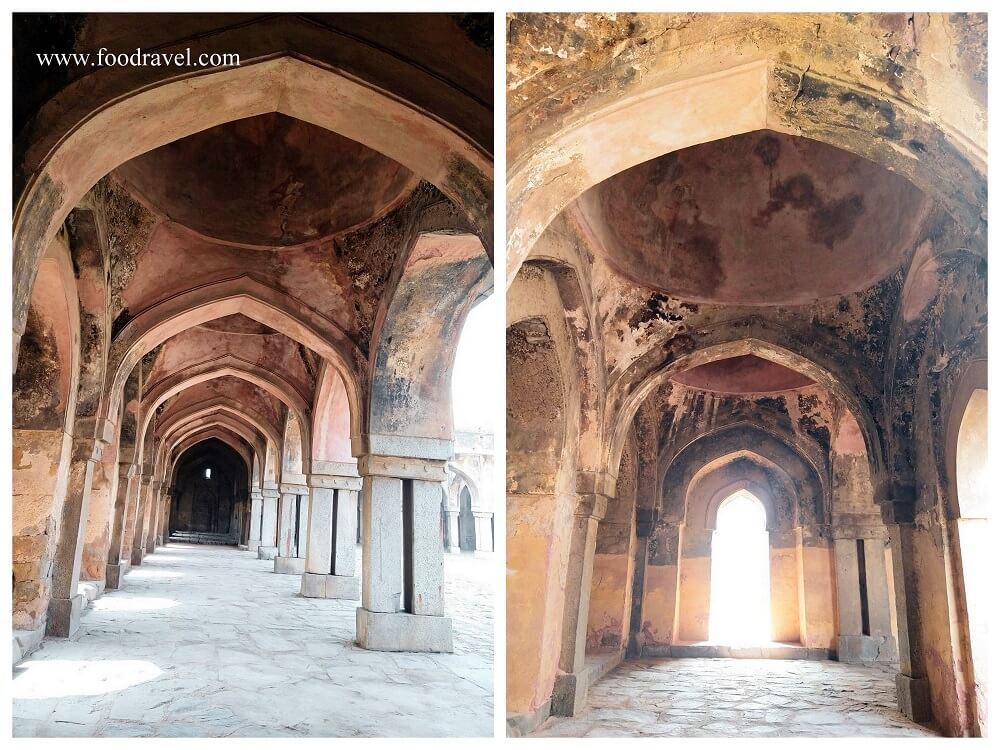


You will see mihrab on the west wall of the mosque with five projections. There are 25 arched openings to the west wall’s passageway. A large-sized dome covers the central high opening which has Tughluqi minarets. The mosque is based on a raised platform with a layout of four iwans and one has to walk several stairs to enter the monument. The main entrance has an iron gate. The walls of the mosque at some places have stucco paintings which you have to figure out by close observation.
Read Here – Buland Darwaza Fatehpur Sikri



If you are interested in ancient study and architecture, you will see the influence of Timurid architecture on this mosque, which once was prominent in Central Asia. There’s a small passage that will take you to a small independent place. It was supposed to be a prayer place for women. Due to blocked passage, one can’t actually go there. There are a total of eight domes over the North and South verandahs whereas seven domes are present on West and East. I couldn’t visit the roof as I didn’t find any passage to go there but it is said that the view from the top of the mosque is worth a visit. You can also capture glimpses of Bijay Mandal from the west.
Read Here – Akbar’s Tomb Sikandra


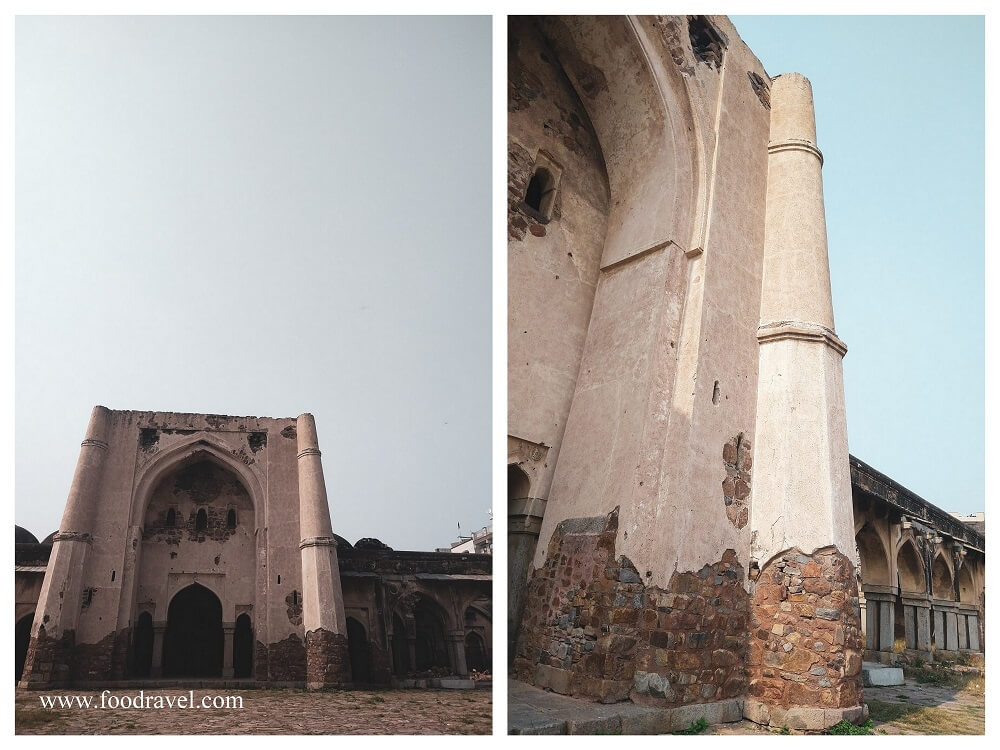
The mosque had a madrasa and a treasury. The mosque had 64 domes. The central dome of the mosque is the largest and highest at 9ft. Begumpur Mosque is considered to be the first mosque in India which represents the Brhatmukhi type where the main façade at the center has 24 arches along with pylon minarets. The mosque is solid and the structure seems to have been built to withstand natural calamities. Plastered rubble masonry along with Delhi quartzite materials have been used in the construction of the Begumpur mosque. Delhi quartzite is a local stone of grey color. This stone is hard to carve, thus, was the best suitable material which had strong endurance and was easily available. It is said that during Tughlaq’s time, the courtyard used to be covered with a canopy.
Read Here – Itimad-ud-Daulah’s Tomb


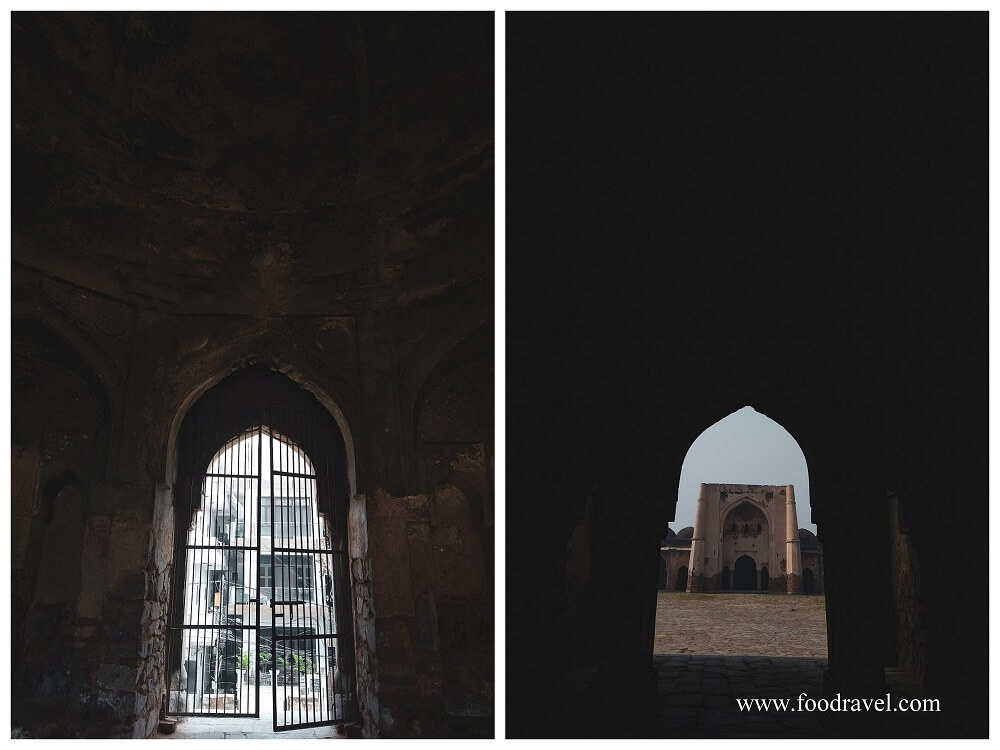
When villagers sheltered inside Begumpur Mosque
When Begumpur mosque was left abandoned since Firoz Shah established his new capital in Firozabad, Begumpur area still existed. In 1739, Nadir Shah attacked Delhi; people took shelter inside the mosque to escape from the attack. They came with their livestock, bags, and other stuff. Around 50 families lived inside the mosque at that time. Even after Nadir Shah’s departure, the families didn’t leave the mosque for long. When the British started restoration projects, then they removed the people who were living inside the mosque.
Read Here – Mehtab Garden, Agra
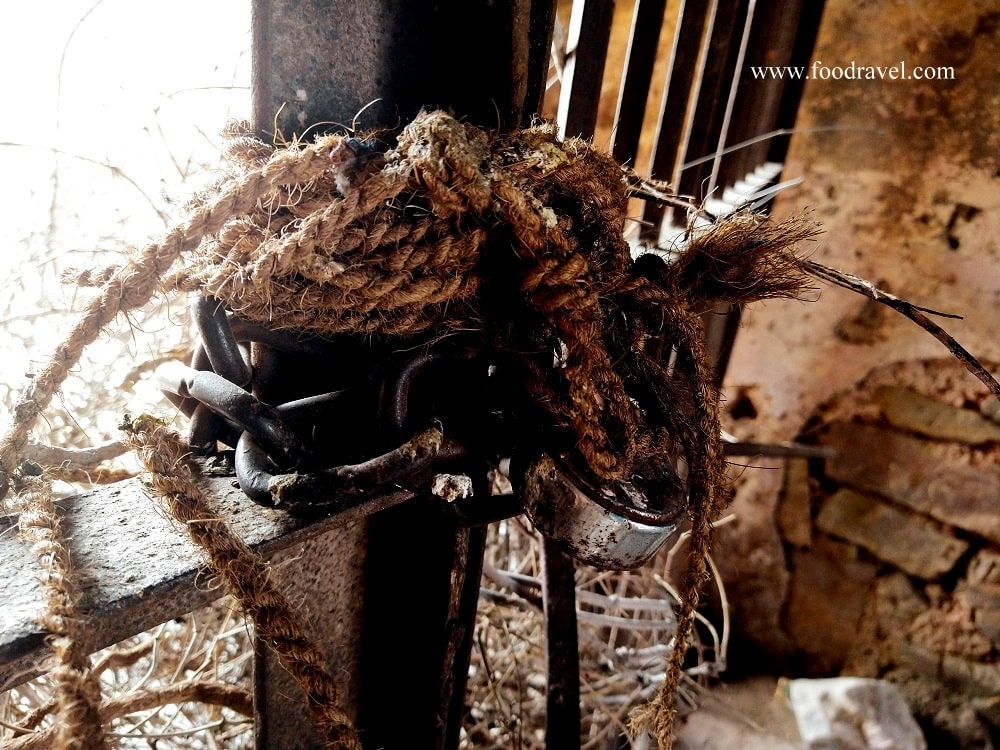

After partition in 1947, the mosque was sheltered by Hindu families and lived there. These families constructed walls in the mosque for homes. The mosque turned into a small locality. Today, the mosque is surrounded by the houses of the neighborhood and has become a hideout for alcoholics and druggies. You can easily find the smoked pots in the vicinity of the mosque. Not many people know about this mosque and its significance was neglected for years. However, several independent heritage bodies have started offering tours/walks to such places.
Read Here – How to plan 2 days trip to Agra?
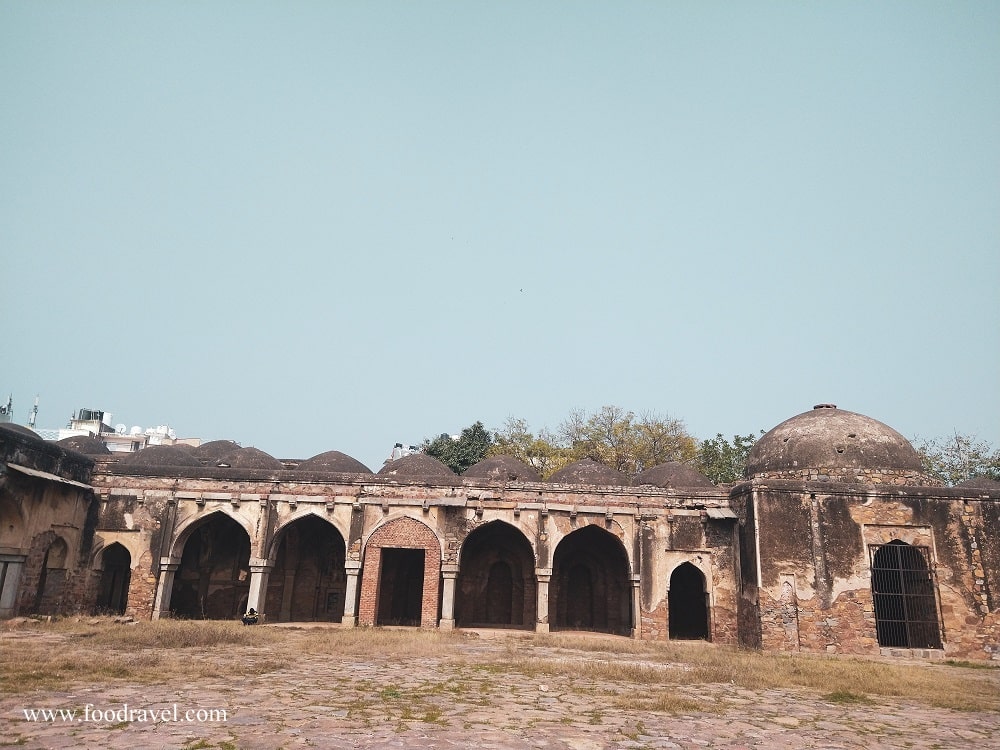
The courtyard of the mosque has now turned into a playground. You will find local kids playing crickets. The area at the entrance nearby the stairs remains occupied by the people who live around; they play cards, smoke hukka, etc. Local people dump waste around the mosque.

How to reach Begumpur Masjid, Malviya Nagar?
The nearest metro station to Begumpur Mosque is Malaviya Nagar. From there, you can book an auto-rickshaw. I walked to the mosque from the metro station. I was on an expedition that day and I wanted to take a walk only which a nice way to explore an area. The distance of Begumpur mosque from Malviya Nagar Metro Station is less than 2 KM (around 1.8 KM as per Google Maps). So, I opened the maps and followed the way on foot.
Read Here – Jama Masjid, Fatehpur Sikri



Entry ticket and timings of Begumpur Mosque
The mosque is one of the monuments to visit without an entry ticket in Delhi. So there is no need to buy any ticket. You can easily walk into the mosque. For timing, I am not sure. I assume it should be from sunrise to sunset.


When I visited Begumpur mosque in January this year, I noticed several parts of the mosque have been damaged, either naturally or by man-done activities. Some walls had fallen; some arched roof had fallen. Notorious kids carved names on the walls and pillars of the mosque and overall, the condition of the mosque was pathetic. When I entered the mosque, it reminded me of Bibi-Khanyum Mosque of Samarkand. I came across an article published in timesofindia.indiatimes.com which mentioned that the then minister of culture, Mahesh Sharma declared Begumpur masjid as a monument of national importance.
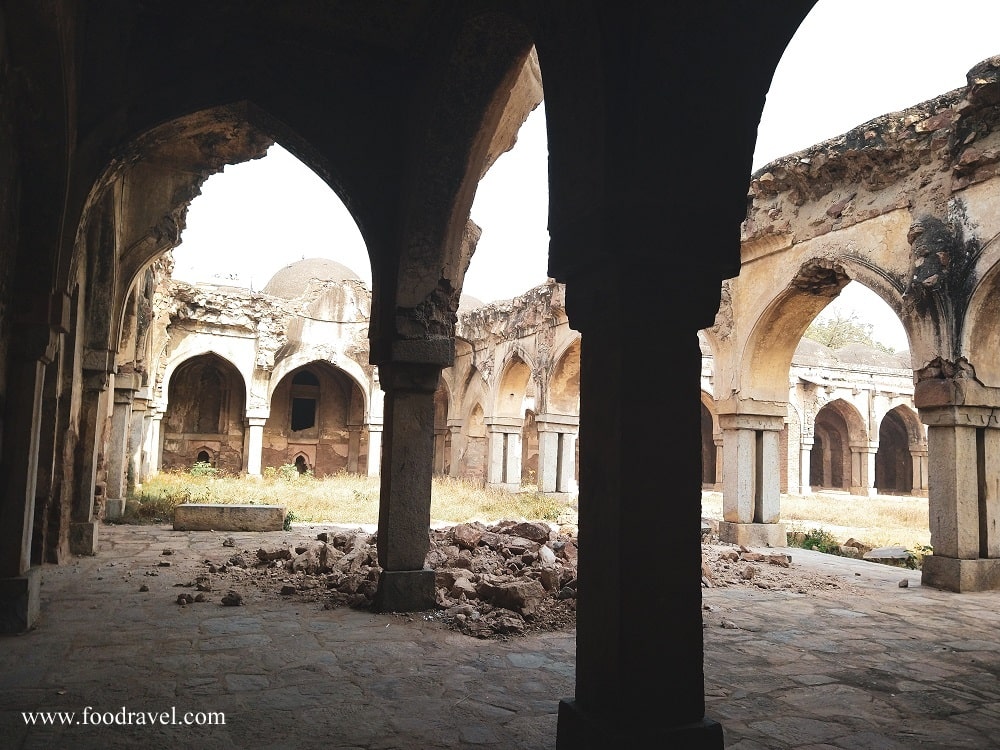
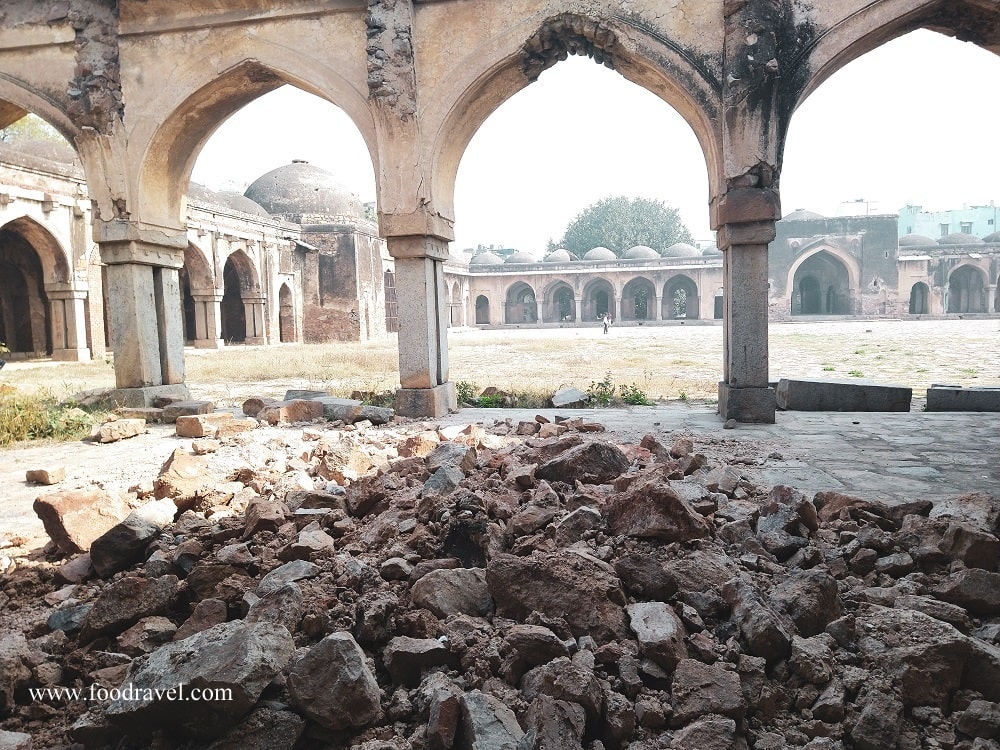



There are lots of monuments in Delhi which are waiting for administrative attention. Not all the monuments are fortunate enough to receive funding and attention from the authorities and are left on their own fate. We can find such monuments everywhere. These monuments should be preserved as long as they can survive and stand.
![]()

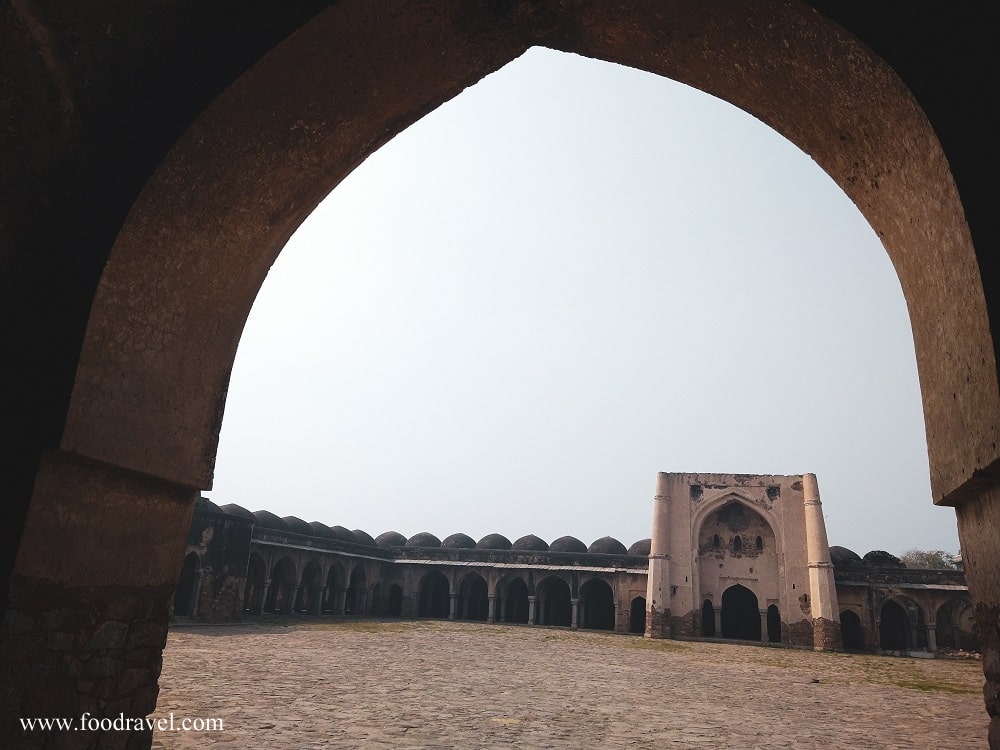

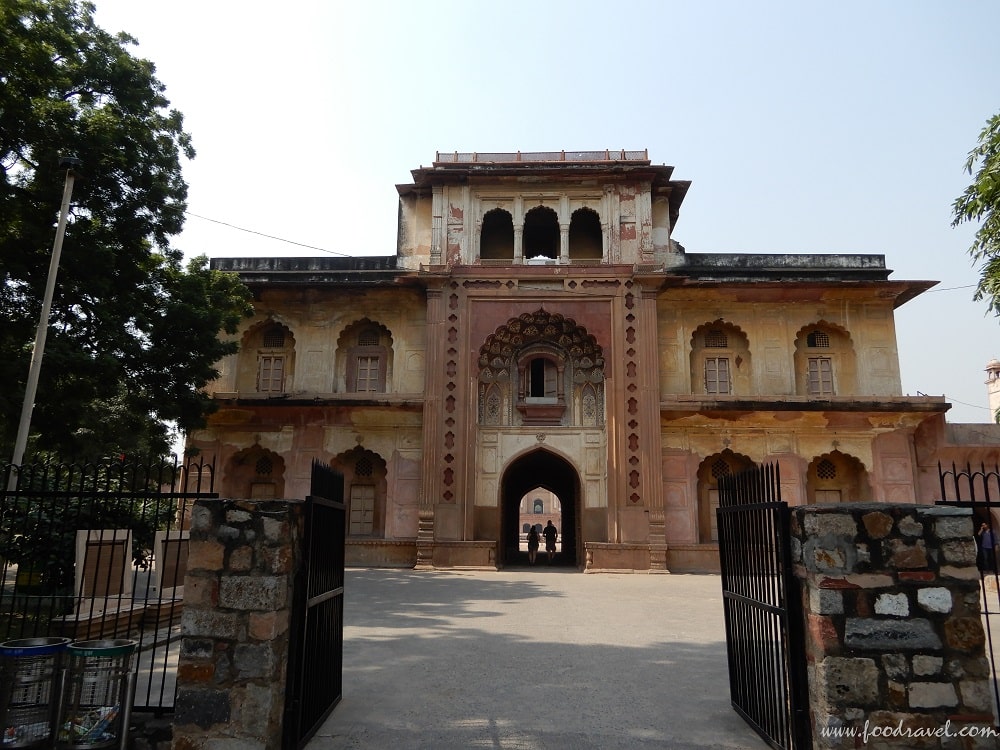
Nice historical information to know!
Nice historical information to know!
Thanks for stopping by Sherry.
This reminds me of my Delhi visit. The architecture is so relatable and grand. Your pics are great too.
Thanks for stopping by, Tasneem.
Stay safe.